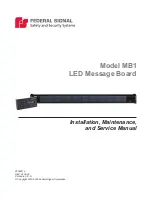
www.qimaging.com
©2014 QImaging. All rights reserved. QI_OPTIMOS_UM_Rev_A0
13
optiMOS USER MANUAL
Regions of Interest (ROI)
Regions of Interest (ROIs) are defined areas within a single frame that the user selects to be captured and
delivered to the host PC. With an ROI, the camera exposes the entire frame for the specified exposure time but
only digitizes and delivers the pixel information from the defined ROI. This reduces the amount of data sent per
frame and has the advantages of reduced file storage demands as well as usually faster frame rates.
As of January 2014, this first generation optiMOS camera does support ROIs but not with speed improvements.
Meaning, if a 128x128 ROI is selected, the max possible frame rate of the camera is still 100 fps. ROIs with
speed improvement is under development as a firmware update for the optiMOS camera.
When ROIs with speed improvements are added, there will be a direct correlation in the achievable frame rates
of the camera and the number of rows digitized. Based on the sCMOS architecture, when any pixel in a row
is defined to be part of an ROI, the entire row must be digitized. In the FPGA of the camera, the pixels not
part of the ROI are dropped and only the user defined ROI is delivered to the host PC. Dropping the horizontal
pixel data however, does not improve the frame rate of the camera. Therefore, reducing the number of rows
will increase the camera’s frame rates, while reducing the number of columns will have no effect. Frame rates
above 1000 fps are expected to be achievable from ROIs with less than 100 rows.
Digital Binning
True hardware binning on a CCD is the process of summing charge together from multiple adjacent pixels
before digitizing the signal. The result is an increase in the signal to noise ratio and frame rate but at the
expense of reduced spatial resolution. Hardware binning on a CCD typically range from 2x2 to 16x16
depending on the application requirements. At 2x2 binning, the Signal to Noise Ratio (SNR) increases by a
factor of 4x.
With CMOS sensors however, there is no true hardware binning. Each pixel is digitized at the pixel level and
there are no extra output nodes to transfer charge into before digitizing. That said, if you pixel add in FPGA or
even in a host application (known as digital binning), you will see an increase in signal, and an increase in noise
as well. But because noise adds in quadrature, your effective increase in SNR is 2x (vs. 4x for hardware binning
on a CCD – for 2x2). This also does not improve your frame rate as it occurs once the data has already been
digitized.
As of January 2014, the first generation optiMOS camera does not support digital binning. Similar to ROIs with
speed improvements though, digital binning is under development as a firmware update for later in 2014.
Device Synchronization
Your optiMOS camera offers several methods of hardware synchronization via TTL signals with external devices
including function generators, light sources, shutters, and filters. Each camera has an I/O connector (pin out













































